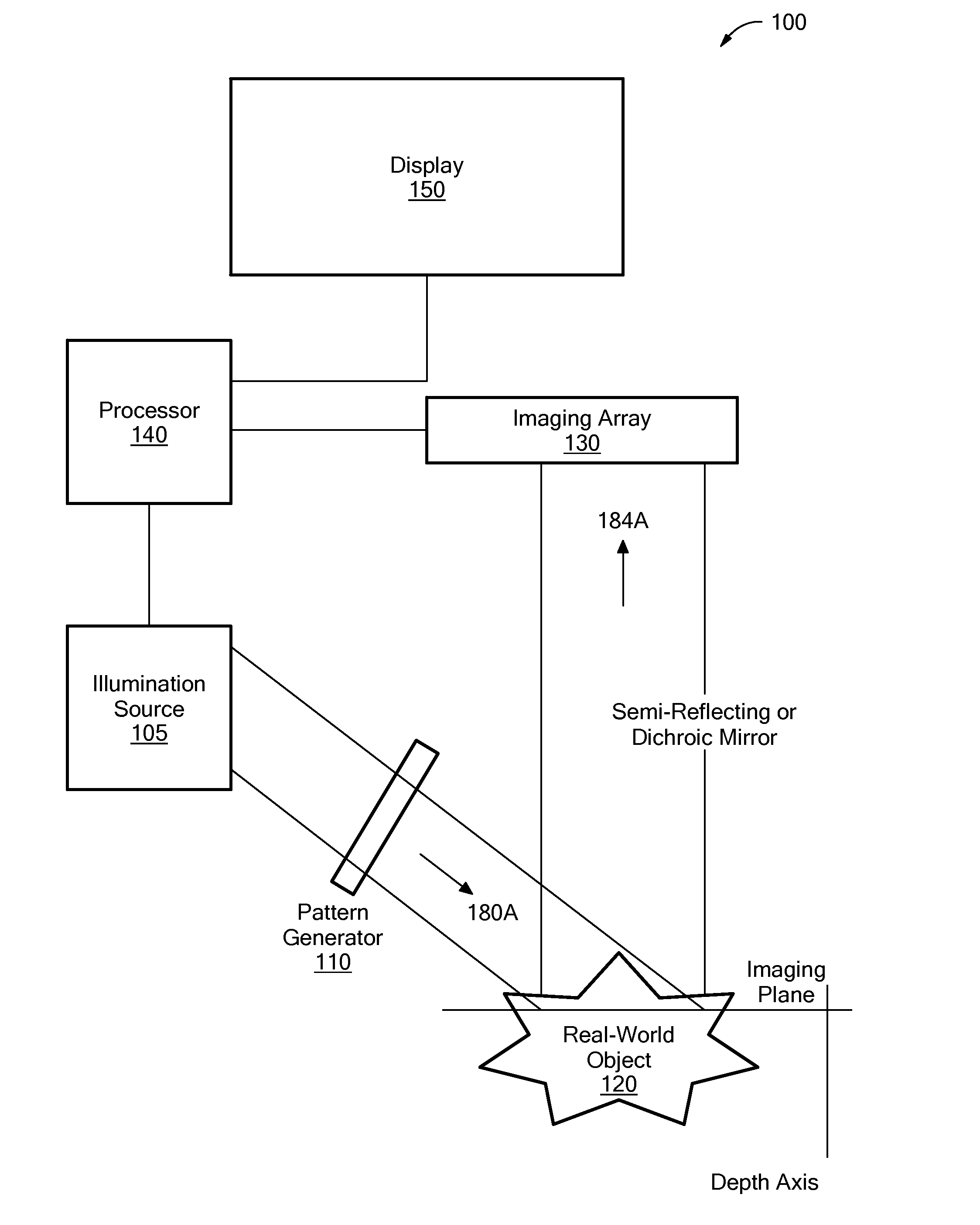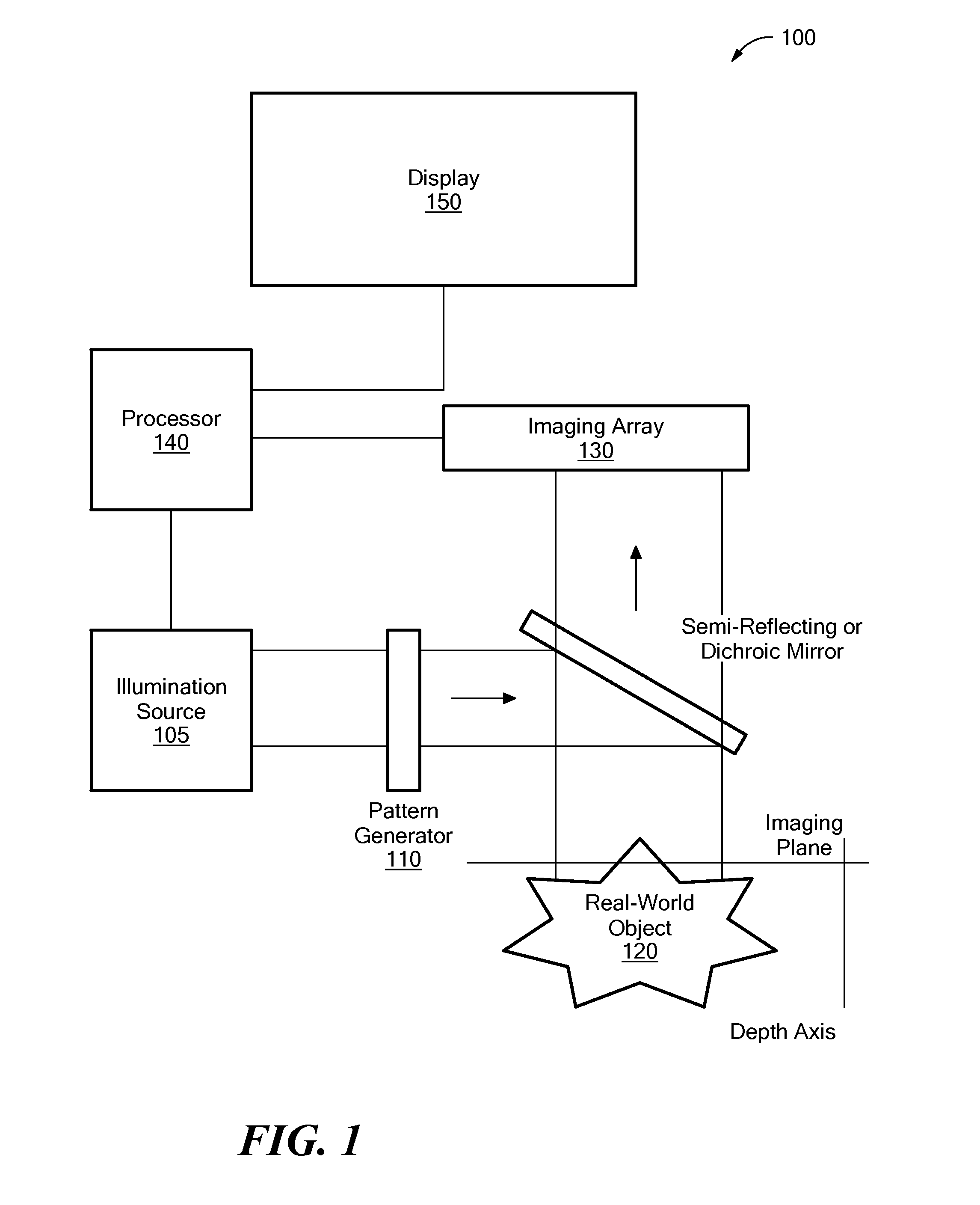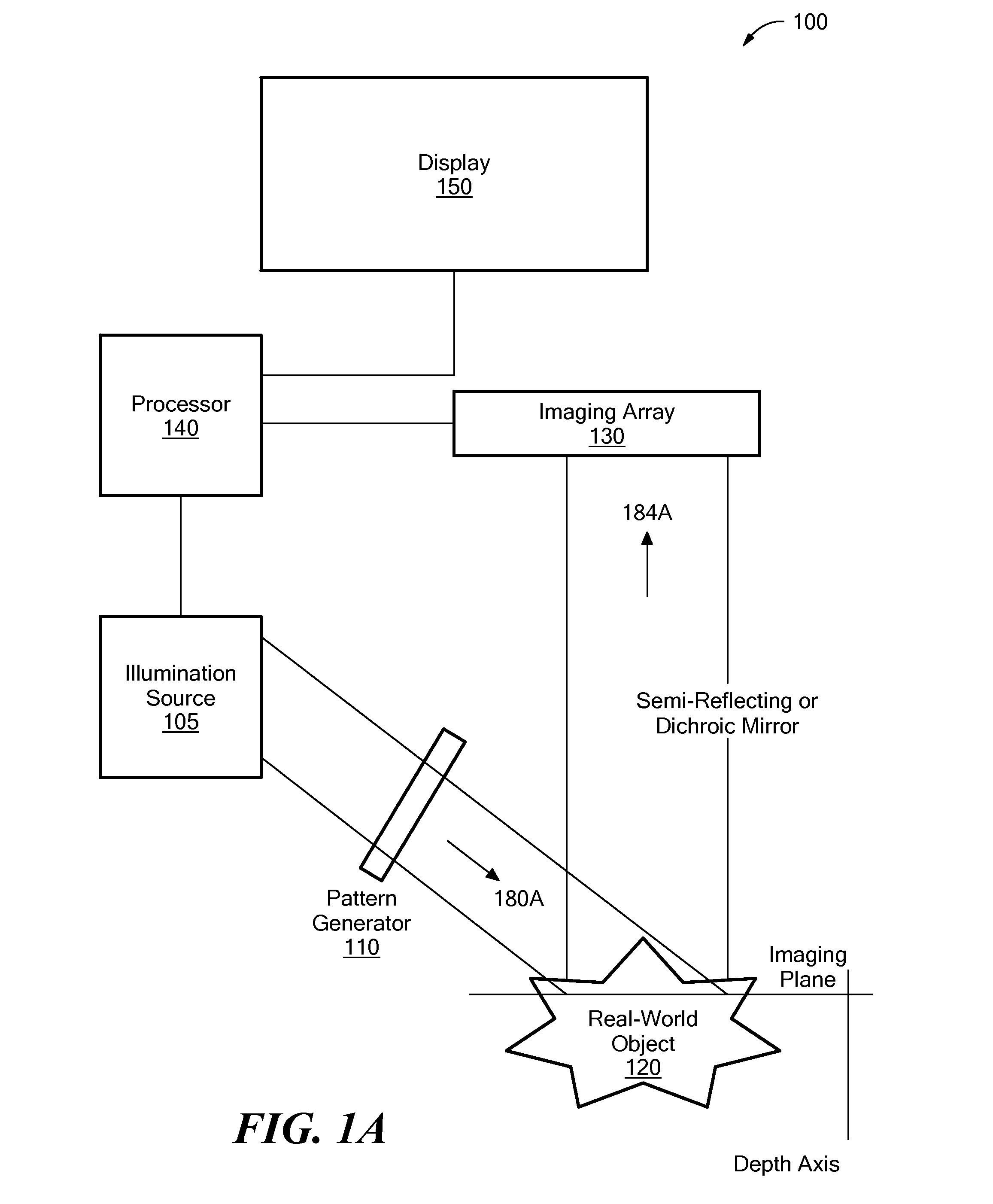System and Method for Producing an Optically Sectioned Image Using Both Structured and Uniform Illumination
a technology of optical sectioning and uniform illumination, applied in the field of imaging, can solve the problems of low signal contrast, inability to slice structures, and many in-vivo structures, and achieve the effect of reducing the number of optical sections
- Summary
- Abstract
- Description
- Claims
- Application Information
AI Technical Summary
Benefits of technology
Problems solved by technology
Method used
Image
Examples
Embodiment Construction
[0027]Definitions. As used in this description and the accompanying claims, the following terms shall have the meanings indicated, unless the context otherwise requires: The term “object signal” shall mean a signal produced by an object such as through reflectance or fluorescence or other energy principle. The terms “imaging system” and “optical imager” shall mean a system that includes at least a detector array (e.g. CCD camera, CMOS camera, etc.). An imaging system may also include one or more sources of illumination. Illumination may result from energy produced by a source (e.g. lamp, laser, diodes etc.). The term “structured illumination” means illumination that produces a spatially varying signal i.e. a signal that exhibits non-uniform contrast. Structured illumination may be spatially random or patterned. The term “uniform illumination” means that the illumination does not significantly vary with space, such that a detector array would not register variations at different spat...
PUM
 Login to View More
Login to View More Abstract
Description
Claims
Application Information
 Login to View More
Login to View More - R&D
- Intellectual Property
- Life Sciences
- Materials
- Tech Scout
- Unparalleled Data Quality
- Higher Quality Content
- 60% Fewer Hallucinations
Browse by: Latest US Patents, China's latest patents, Technical Efficacy Thesaurus, Application Domain, Technology Topic, Popular Technical Reports.
© 2025 PatSnap. All rights reserved.Legal|Privacy policy|Modern Slavery Act Transparency Statement|Sitemap|About US| Contact US: help@patsnap.com



